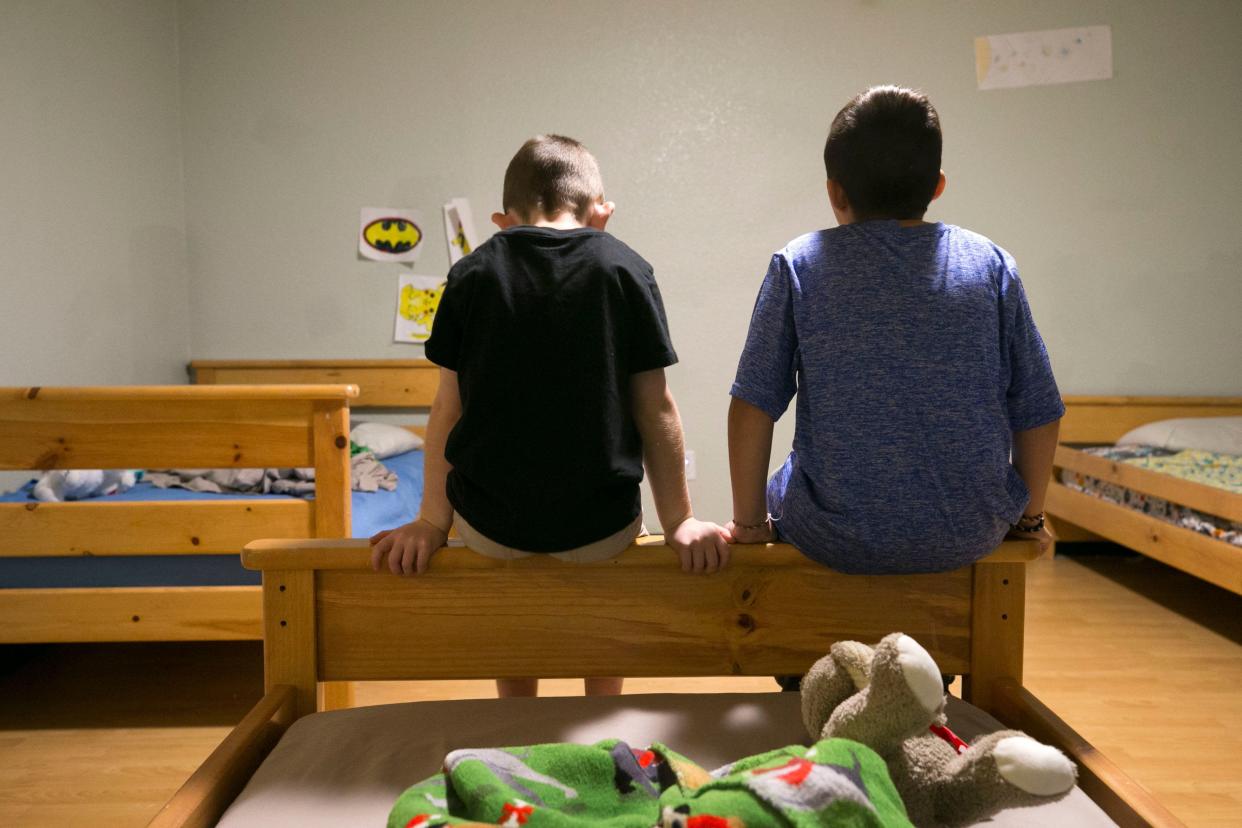Arizona still yanks too many kids from their parents. Can a new director fix this?

- Oops!Something went wrong.Please try again later.
Even before taking office, Arizona’s new Democratic governor made clear she’s not about to repeat one of the biggest blunders of the previous last Democratic governor.
That’s great news for the state’s vulnerable children. Indeed, to understand why Arizona’s child welfare system is a national disgrace, it’s essential to revisit the crucial mistake made by Janet Napolitano within days of taking office 20 years ago.
High-profile child abuse deaths in cases “known-to-the-system” were front page news and Napolitano had fallen for the Big Lie of American child welfare: that child removal equals child safety. So within days of taking office she was greeted with wild applause when she told a child welfare conference, “Err on the side of protecting the child, and we’ll sort it out later.”
With those words, Napolitano set off a foster-care panic – a sharp, sudden increase in children torn from their homes and forced into foster care. Within months Napolitano seemed to realize her mistake. She brought in Dave Berns, a reformer who had transformed a county child welfare system in Colorado. An Arizona Republic headline asked: “Can star czar rescue CPS?” The answer was no.
Arizona's foster care panic never ended
Foster-care panics are much easier to start than to stop. And while in most states they end in a few years, in Arizona it’s still going.
In 2021 Arizona tore children their families at a rate more than 60% higher than in 2002, just before the panic began. Arizona’s rate-of-removal is 75% above the national average and Maricopa County tears apart families at the highest rate among America’s biggest cities and their surrounding counties.
Maricopa County also is among the worst when it comes to racial bias.
Years later:Is Arizona's child-welfare agency keeping kids safer?
Six in 10 Black children there will have to endure a child abuse investigation before they turn 18. A Black child in Maricopa County is 17 times more likely to be taken from his parents forever than a child in New York City and well over doubled the national average.
The culture of take-the-child-and-run is so embedded in the Department of Child Safety that caseworkers actually thought they could get away with wearing T-shirts that said “professional kidnapper.”
Don't confuse poverty with neglect
But the child abuse deaths never stopped. That’s because all those new reports and needless removals so overload workers they have even less time to find the relatively few children in real danger.
Gov. Hobbs made clear she understands this as soon as she named Matthew Stewart to run DCS. Stewart has some advantages over Berns. He already knows DCS from within, having spent 10 years as a case manager and training supervisor, and from without, as founder of Our Sister Our Brother, which fights racial and class bias in child welfare.
He has another advantage: An enormous amount can be done without spending more, but just spending smarter. For example: Arizona diverts $150 million per year in federal Temporary Assistance for Needy Families funds from actually helping needy families into child abuse investigations and foster care. That’s 61% of TANF spending, compared with a national average of 8%.
Because the biggest problem in child welfare is the confusion of poverty with neglect and even small amounts of money can make a huge difference, simply putting that money back where it belongs would be a great start.
Providing high-quality legal representation for families has been shown to significantly reduce foster care with no compromise of safety. That’s because such defense doesn’t get “bad parents” off, it helps craft alternatives to the pointless, cookie-cutter “service plans” forced on families by DCS, so the family can stay together safely. It pays for itself in reduced foster care – and in many cases, the federal government will pick up half the cost.
The toughest challenge isn’t financial, it’s cultural – rooting out the ethos reflected in those T-shirts. For that, Stewart will need ongoing support from the governor. It looks like he’s going to get it.
“Err on the side of protecting the child, and we’ll sort it out later,” Napolitano said in 2003. Twenty years later, Arizona DCS finally has a leader who can sort it out.
Richard Wexler is executive director of the National Coalition for Child Protection Reform. Reach him at rwexler@nccpr.info.
This article originally appeared on Arizona Republic: Arizona's new child welfare director has a lot of work to do

